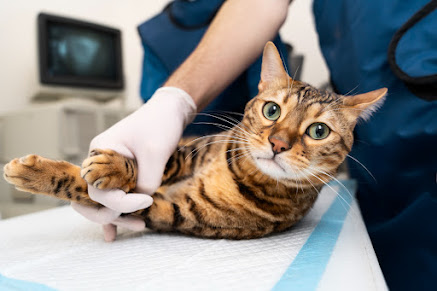Comprehensive Guide: Caring for a Blind Pet Dog
Caring for a pet dog is a rewarding experience, and when a dog becomes blind, it requires special attention and care to ensure its well-being and quality of life. While the loss of sight can be challenging, with some adjustments and extra support, blind dogs can lead happy and fulfilling lives. In this comprehensive guide, we will explore various aspects of caring for a blind pet dog and provide you with practical tips to enhance their daily life.
Veterinary Evaluation and Support:
The first step when dealing with a blind dog is to consult a veterinarian experienced in ophthalmology. They can determine the cause and severity of the blindness, provide an accurate diagnosis, and suggest appropriate treatment options if available. Regular veterinary check-ups will ensure your dog's overall health and well-being.
Establish a Safe Environment:
Creating a safe and predictable environment is crucial for a blind dog. Minimize potential hazards by removing obstacles, sharp objects, and tripping hazards. Use baby gates to restrict access to certain areas or staircases. Additionally, avoid rearranging furniture frequently to help your dog navigate the house more easily.
Scent and Sound Orientation:
Dogs rely heavily on their sense of smell and hearing, so you can use these senses to help your blind dog navigate their surroundings. Use scented markers or essential oils to mark important locations, such as food and water bowls, their bed, or the entrance to the backyard. Encourage the use of verbal cues, whistling, or clapping to help your dog locate you or familiar objects.
Consistent Routine:
Establishing a consistent daily routine provides structure and predictability for a blind dog. Maintain regular feeding, exercise, and bathroom breaks at the same times each day. Consistency helps your dog feel secure and confident in their environment.
Verbal and Tactile Communication:
Verbal communication becomes even more critical with a blind dog. Use clear and consistent voice commands, incorporating positive reinforcement training techniques. Reinforce desired behaviors with treats, praise, or gentle touches. Tactile cues, such as a gentle touch on the shoulder or back, can help guide your dog and convey your presence.
Exercise and Mental Stimulation:
Physical exercise and mental stimulation are vital for a blind dog's overall well-being. Engage in activities that stimulate their senses, such as scent games, puzzle toys, and interactive play. Regular walks in familiar areas are beneficial, but always keep your dog on a leash to prevent them from getting disoriented or lost.
Assistive Devices:
Various assistive devices can significantly improve a blind dog's quality of life. Dog-friendly GPS trackers can help you locate your dog if they wander off, while harnesses with a handle on the back can assist in guiding and maneuvering your dog safely. Additionally, dog boots can protect their paws from injuries while exploring outdoors.
Patience and Positive Reinforcement:
It is crucial to remain patient and provide positive reinforcement to your blind dog. Rewarding desired behaviors with treats, praise, and affection will help build trust and strengthen your bond. Remember that your dog may take longer to learn or adjust to new routines, so consistency and encouragement are key.
Socialization and Support:
Blind dogs can still enjoy social interaction with humans and other animals. Gradually introduce your dog to new experiences, people, and animals in a controlled environment. Proper socialization will help build their confidence and prevent anxiety or fear-based behavior.
Regular Check-ups and Adaptations:
Schedule regular check-ups with your veterinarian to monitor any potential changes in your dog's health or eyesight. As your blind dog ages, be prepared to adapt their care routine to accommodate any additional needs or limitations.
Conclusion:
Caring for a blind pet dog requires patience, understanding, and dedication. By providing a safe environment, using scent and sound orientation cues, maintaining a consistent routine, and offering plenty of love and positive reinforcement, you can ensure your blind dog enjoys a fulfilling and happy life. Remember, with proper care and support, a blind dog can still experience joy, companionship, and an extraordinary connection with their human family.






